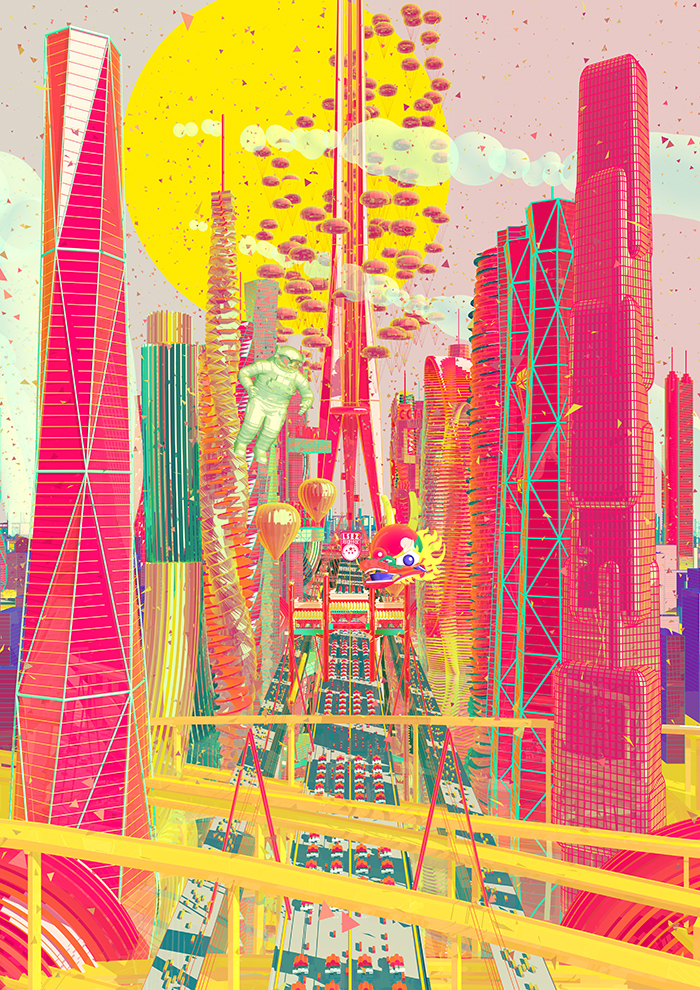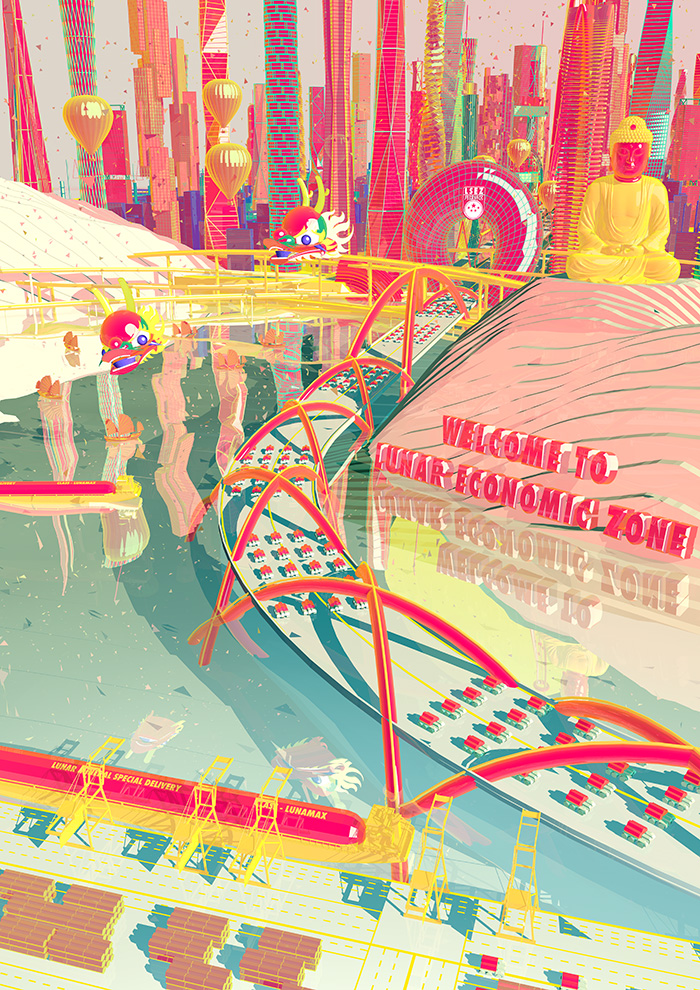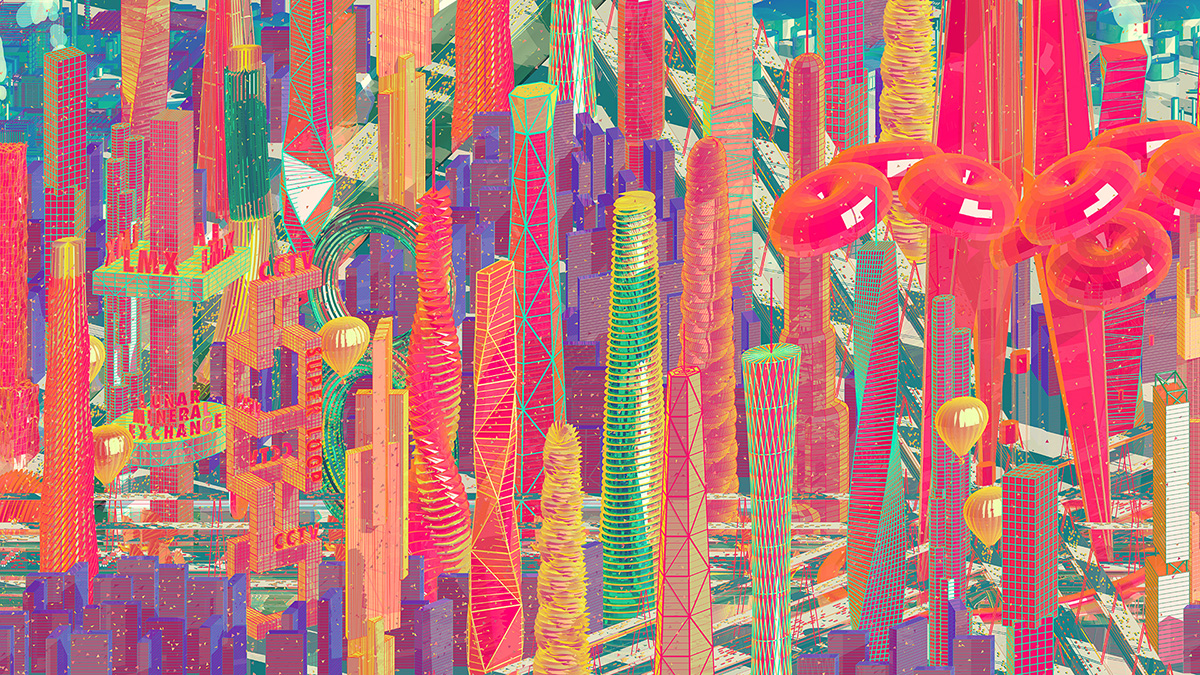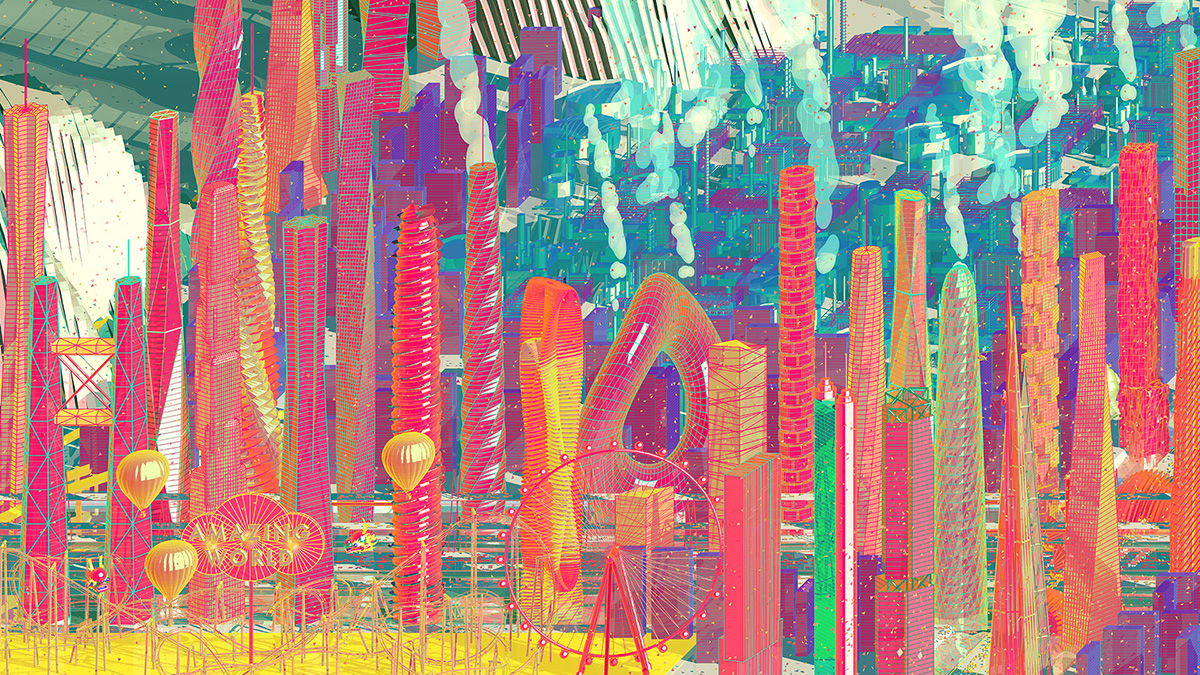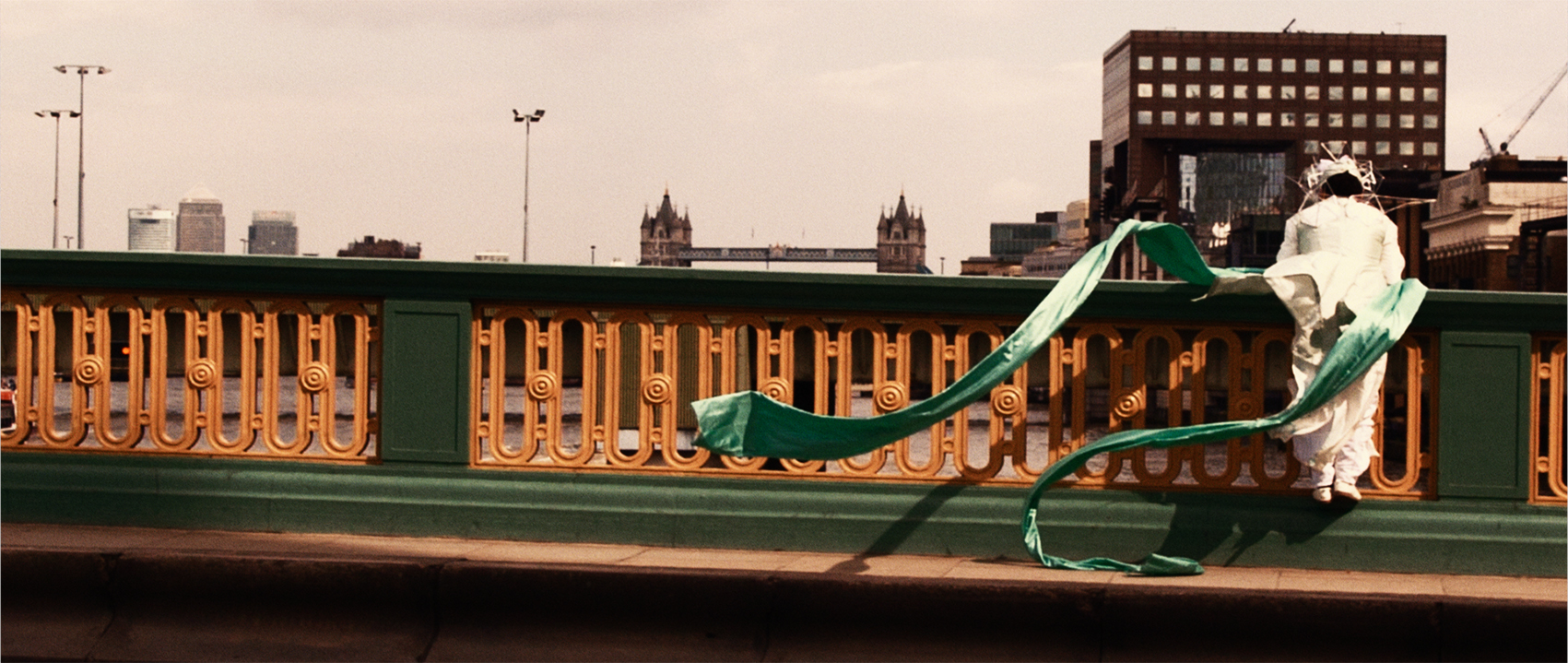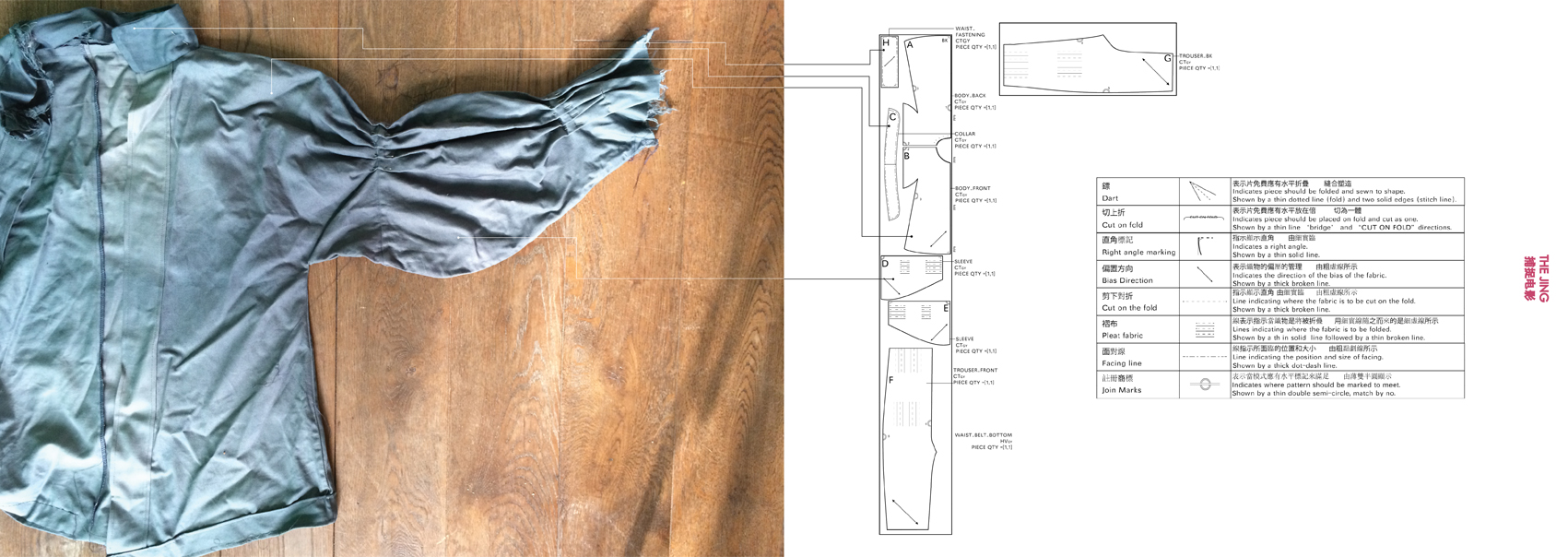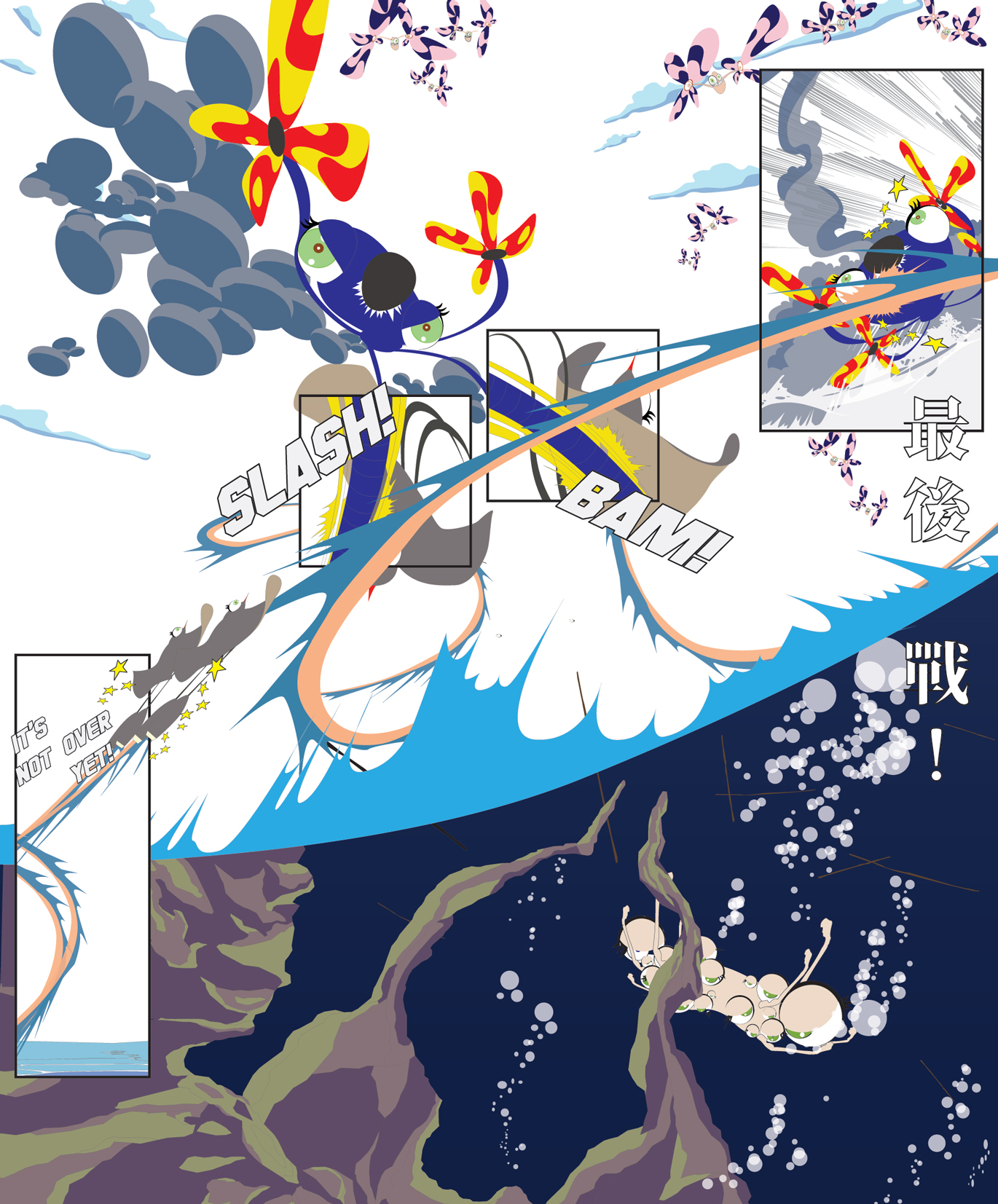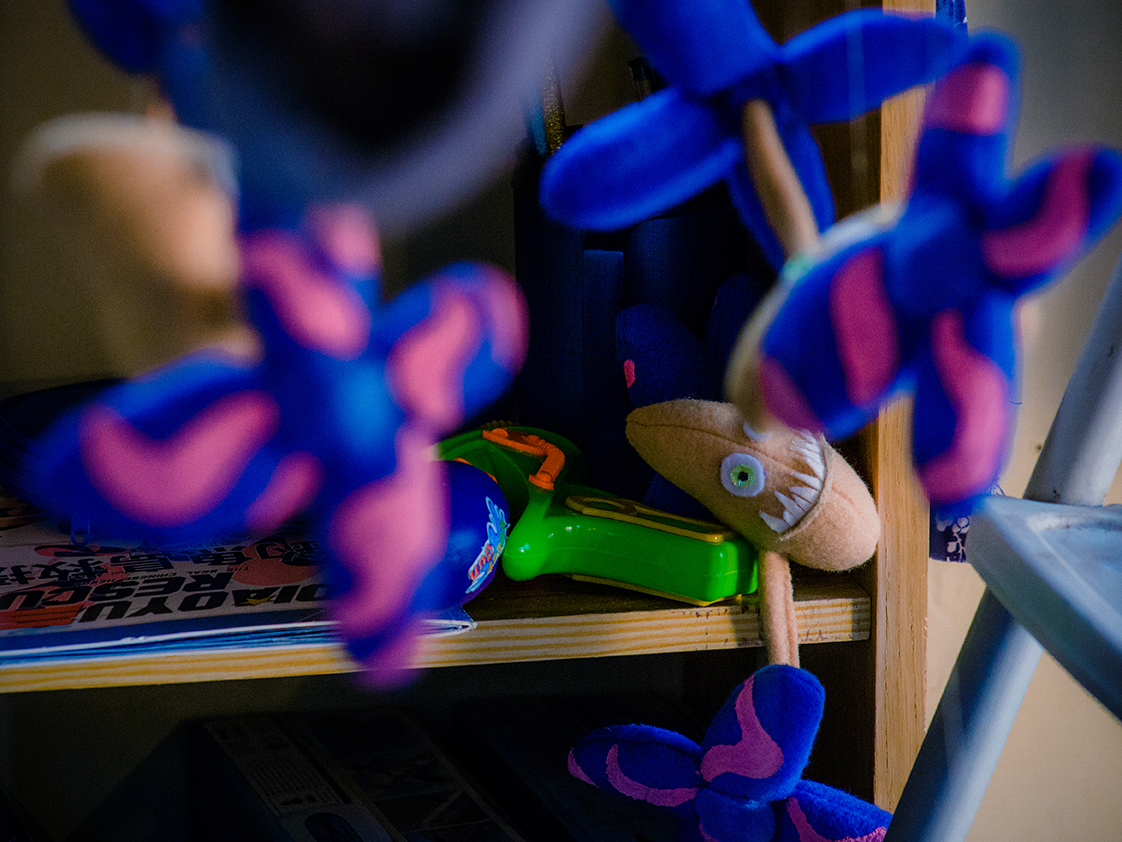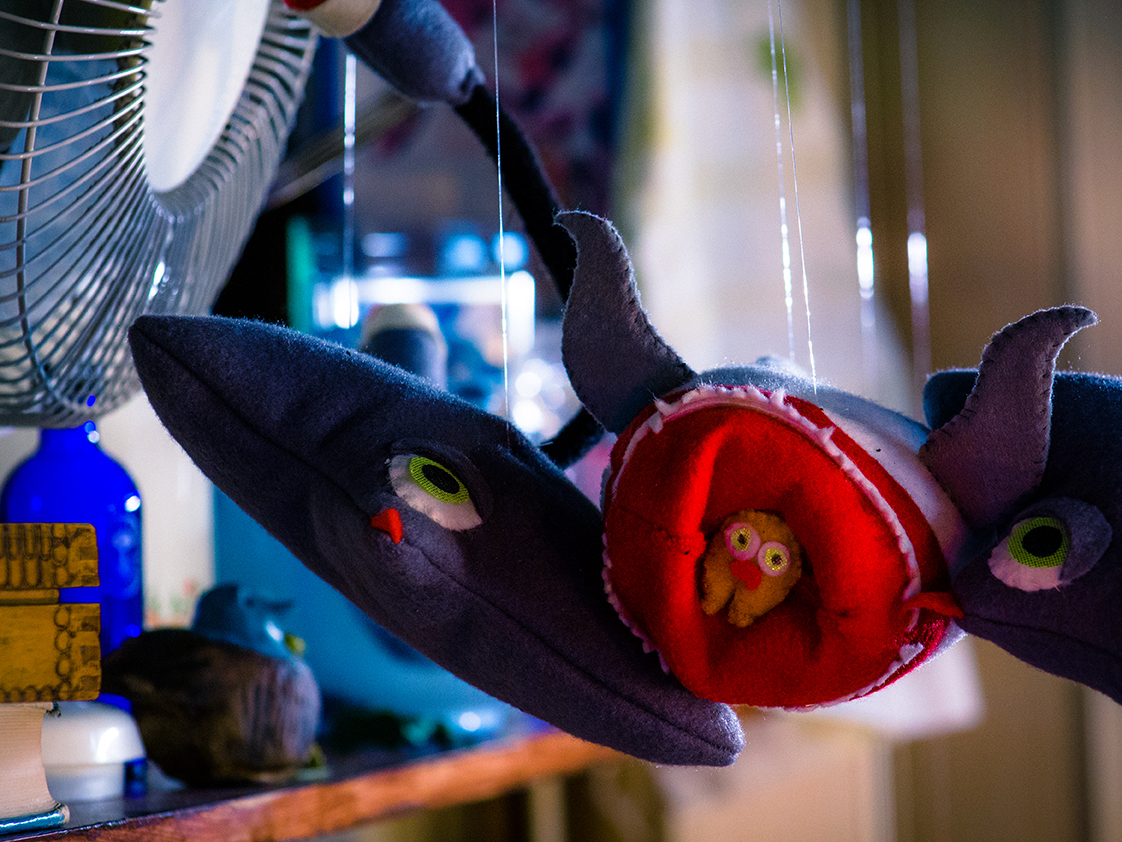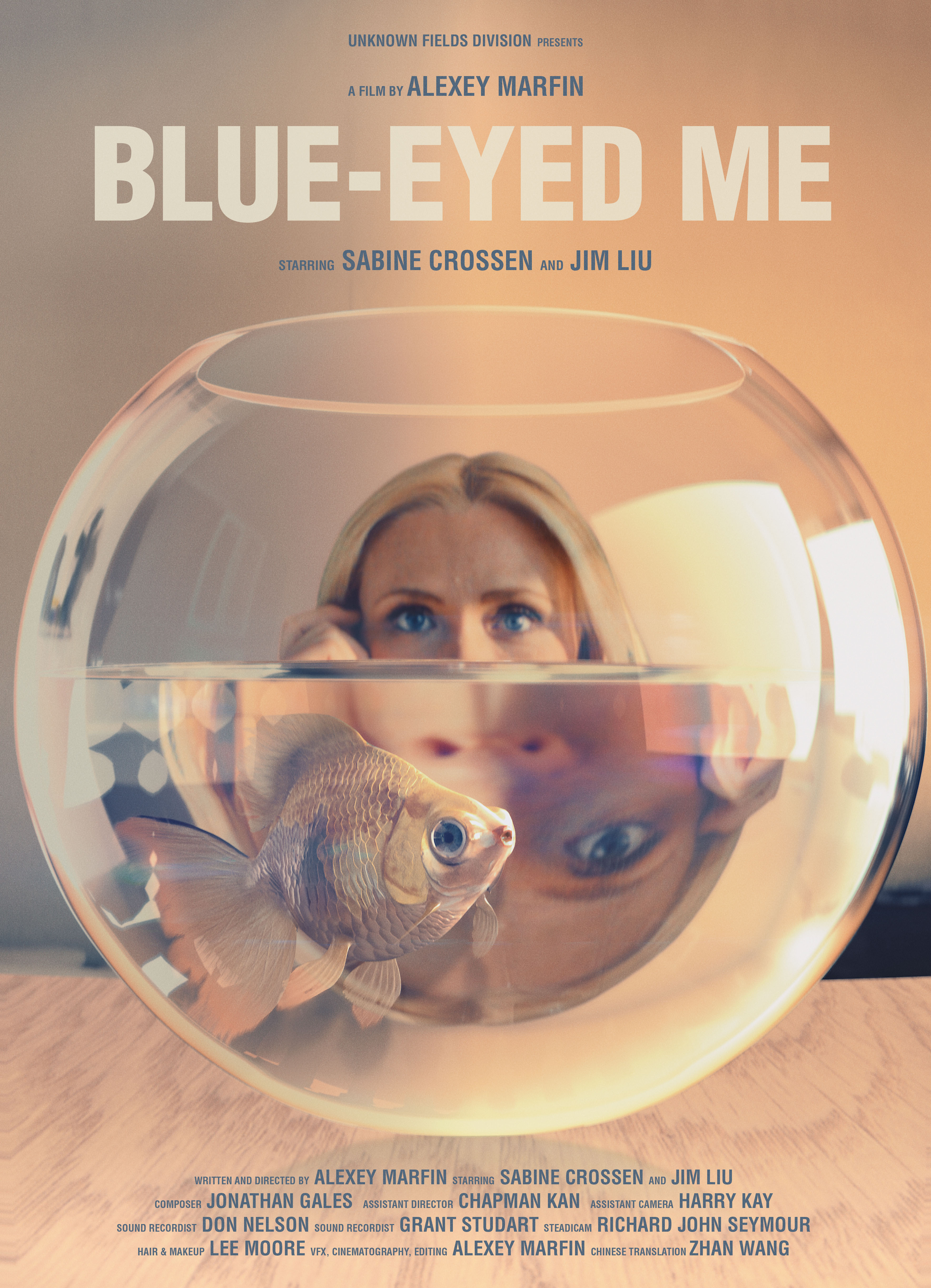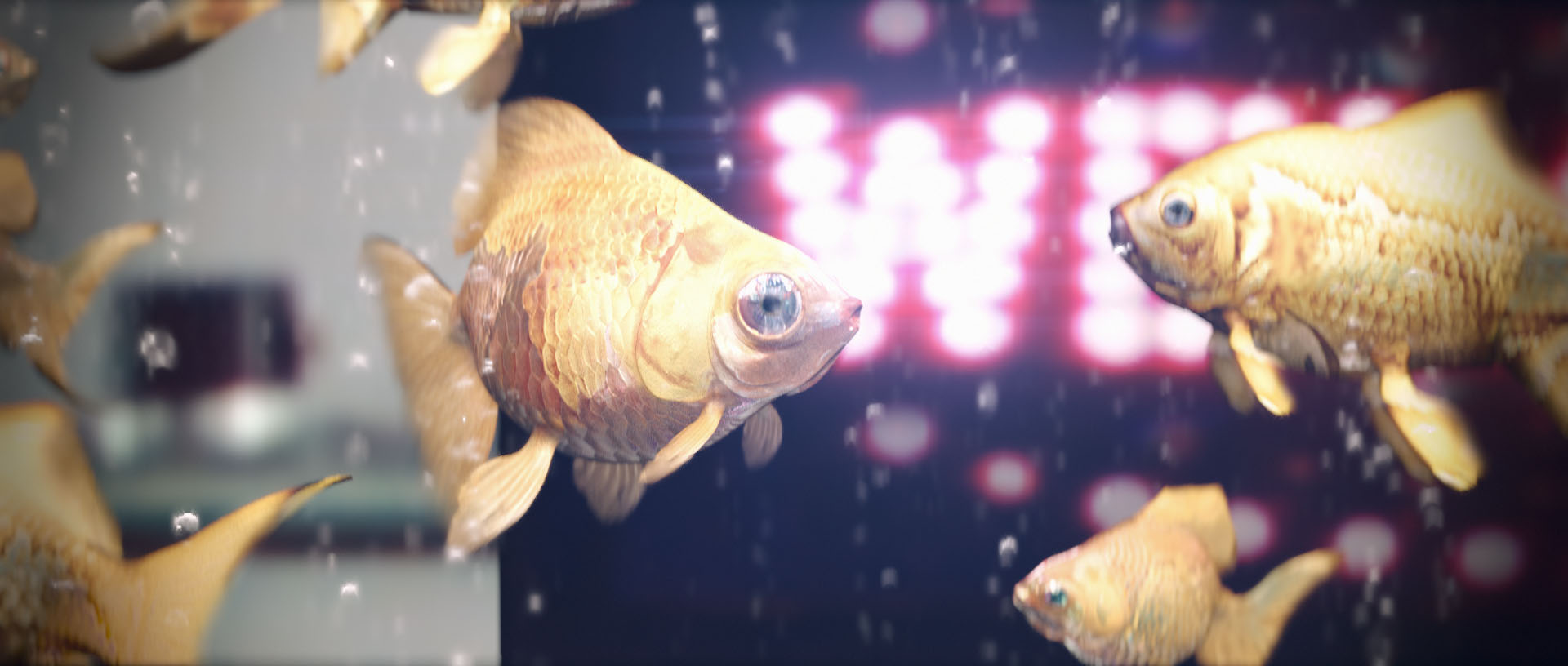WINTER 2013_A WORLD ADRIFT Part 01
_China
Projects
- Lunar Special Economic Zone by Zhan Wang
- Outsourcing Offshore by Nicholas Masterton
- Jinjú on Sea by Harry Kay
- A World In A Room by Chapman Kan
- Blue Eyed Me by Alexey Marfin
The Unknown Fields Division is a nomadic design studio that ventures out on expeditions to the ends of the earth to explore peripheral landscapes, industrial ecologies and precarious wilderness.
This year we travelled East, on board a mega container ship, to the manufacturing heart of Southern China, tracing the shadows of the world’s desires across China Seas along supply chains and cargo routes, to explore the dispersed choreographies and atomised geographies that global sea trade brings into being. These are the contours of our distributed city, stretched around the earth from the hole in the ground to the high street shelf. Our design speculations operate within this dislocated city, where intense pockets of activity in wildly unexpected places supply cultures far removed with the fulfilment of their every need and desire.
Winter 13 Division Roster
Leaders: Liam Young and Kate Davies
Researchers: Chapman Kan, Harry Kay, Alexey Marfin, Nicholas Masterton, Nataly Matathias, Quiddale O’Sullivan, Ardi Rexhepi, Rich Seymour, Golshid Varasteh Kia, Christina Varvia, Zhan Wang.
![]()
Lunar Special Economic Zone by Zhan Wang
Unknown Fields Department of Resources and Propaganda_Winter 2013_China 31°14'5.7" 121°28'46.2"
The 2028 Mid August Day Lunar Mineral Parade is a speculative event which takes place in the newly formed Lunar Economic Zone, an administrative agglomeration of Shenzhen and the Moon, on August 15, 2028. Coordinated by Zhan Wang of our Department of Resources and Propaganda, the event is designed to be seen by the mechanical eyes of the world’s media and is an external projection of pomp and ceremony showcasing an emerging resource rich, technology advanced superpower.
As the media frenzy descends on the city the world is invited to the grand parade that marks the first consignment of lunar minerals touching down on earth. The parade route takes spectators along the main axis of city from the 10000 meter tall space elevator to the mega ships of the world’s largest mineral port. As the world’s largest rare earth producer China currently controls 90% of the mineral market. Their recent limits placed upon mineral exports has artificially driven rare earth prices to unprecedented levels. Western nations are scrambling to find their own mineral deposits to counter the Chinese monopoly. Between documentary and fiction, between propaganda and news the Lunar ¬¬Economic Zone plays on our fears of a localised resource economy.
![]()
Outsourcing Offshore by Nicholas Masterton
Unknown Fields Human Resources Department_Winter 2013_China 31°14'5.7" 121°28'46.2"
Under the umbrella of a fictional headless corporation known as Green Space Industries, Nicholas Masterton from Unknown Fields Human Resources Department has outsourced his project to distributed workforces of Amazon’s Mechanical Turk, Task Rabbit and Fiver.com. For just a few cents you can give a task to the crowd of the internet and legions of cheap and willing workers from all over the world have been competing to carry out his human intelligence tasks. They have been photographing their workspace, documenting their day and recording their most intimate fears and desires.
From dispersed home offices and disparate bedrooms stretching across the globe this invisible workforce has been assigned the task of constructing a film of the atomised city they all now occupy. They work alone in a team and collectively they have assembled a portrait of a new form of city, a place of nowhere and everywhere, dispersed across the earth and tied together with the fibre tendrils of the network. How do we conceive of this kind of city, can we walk its corridors and chat by the water cooler of the global outsourced office.
![]()
Jinjú on Sea by Harry Kay
Unknown Fields Bureau of Rare Earthworks_Winter 2013_China 40°39'40.16" 109°50'36.12"
Each of our small acts of consumerism is the final stage of a long choreography through which landscapes are displaced, dispersed and deposited in foreign places. More matter is shifted around the planet through human activity than is moved by the force of all rivers, glaciers oceans or wind combined. Rare earth minerals extracted from Chinese fields, are refined into cosmetics, painted on faces for one wild night and then washed down the drains of London apartments to collect in sand banks downstream.
In the Division’s Bureau of Rare Earthworks Harry has conjured Jīngjù-on-Sea, a Peking Opera that performs an act of consumerism on a huge scale. Echoing the quantities and trajectories of the existing rare earth mineral supply chain, thousands of tonnes of earth are removed from the central Chinese landscape, and through the tools of the opera - as makeup, costume and set - are brought to London to be deposited in the Thames Estuary. Here, in the final Act, the ‘Dan’ [旦]; the embodiment of the refined rare earth oxide, launches herself into the Thames. The opera is a planetary scale performance that is played out every day; dictated by the beat of international supply of demand, forming a new land in the North Sea, act by act, scene by scene.
Rare Earth Opera costume deign
The Opera's makeup, like all our contemporary cosmetics is made from rare earths and exported from China.
![]()
A World In A Room by Chapman Kan
Unknown Fields Department of Cuddly Conflicts_Winter 2013_China 25°44'55.70" 123°29'3.59"
On the floor of a small bedroom, a child plays with a stuffed toy. In the corner a TV news broadcast flashes images of fighter jets over the disputed Diaoyu Islands. Toys have always been used as message spreaders. By rebranding violence as action, toys such as G.I. Joe smuggle a culture of military victory into the innocent universe of the child.
In the Division’s Department of Cuddly Conflicts, Chapman has developed a series of nationalistic toys as Trojan horses to reframe the political situation of the East China Sea from the point of view of the Chinese propaganda machine. This enduring territorial dispute over eight uninhabited rocks, is played out by series of fantastical friendly monsters designed from warships, jet planes, and military machinery that describe the claiming of these islands. Political photographs that may be long lost in the memories are replayed through the actions of these characters and the innocent child's bedroom is transformed into a stage for the toys.
A stage where politically charged, propagandised historical events are enacted through play; collapsing the complexities and scale of the territorial dispute into a bedroom, through the imagination of a small Chinese girl.
![]()
Blue Eyed Me by Alexey Marfin
Unknown Fields Commodified Biology Lab_Winter 2013_China 22°16'24.62" 114°11'16.53"
In 2001 the cost of sequencing a single gene was a billion dollars. In 2014, it was a thousand. By 2020 it has dropped to less than a dollar. Massive data brokering agencies that now buy stockpiles of personal digital information scraped from the clouds of the internet will soon categorize, manipulate, and trade in biological material. Alexey Marfin of our Commodified Biology Lab takes us on a journey through the world of the 99-cent lifeform, where life is no longer unique or natural, but a set of manufactured traits and data indexes, exploited for maximum profit. Like a colour matched cover for a phone we collect genetically modified pets, living avatars, engineered to look like their owners. We follow the manufacture of a designer fish from the Shenzhen labs of BGI, the world’s largest DNA sequencing company to the sprawling factory floors of industrialised breeding. We visit the endless wholesale markets where traders buy and sell disembodied living tissue and see the cheap knock offs and copies spilling out of DIY biotech incubation tanks in Hong Kong street markets. You are not a unique snowflake, this is the post-personal economy.
![]()

